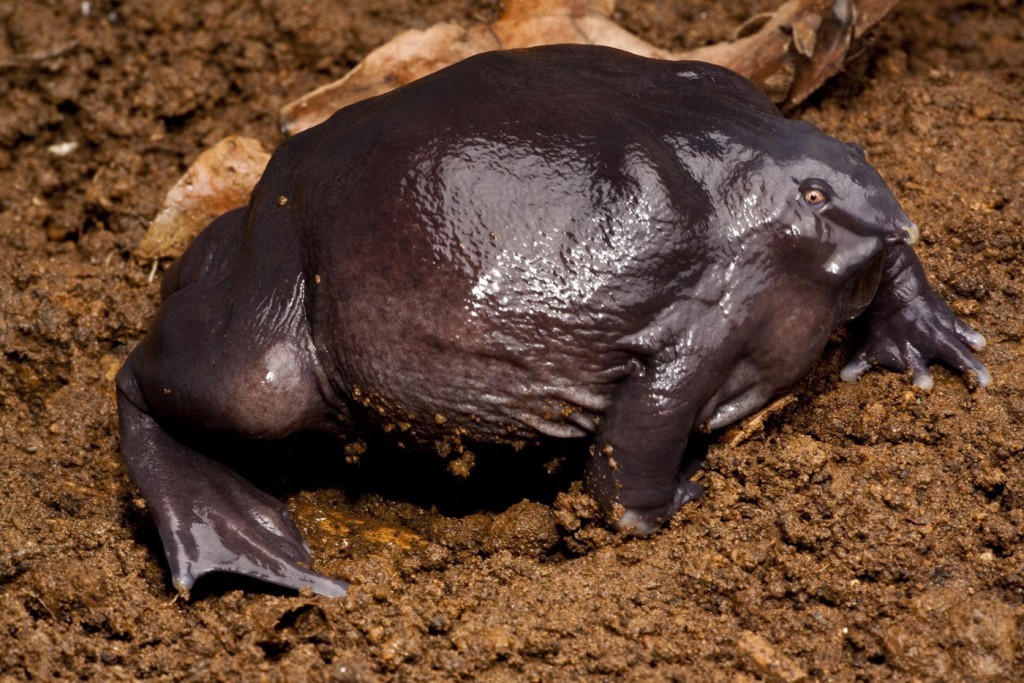This week’s Mystery Creature was the indian Purple frog (Nasikabatrachus sahyadrensis). A very unusual looking frog found in certain parts of India;
Here are ten facts about this unusual creature…
1. The Indian purple frog is so called because it tends to have a dark purple colouring. It is also referred to as the purple frog or the pig-nose frog.
2. Unlike most frogs the body of the purple frog is round and bloated looking, with a very small head and short, whitish snout like nose. The legs of the purple frog are short and protrude out from the side of the body, the hind legs are strong with wart like lumps that appear to aid digging. They have partially webbed feet with rounded toes.

3. The tadpoles of the purple frog have oral suckers to allow them live in fast flowing streams.
4. The purple frog spends almost it’s entire life underground – only emerge for about two weeks at the start of the monsoon season (around May) for mating; The frog’s strong hind legs are used for digging, acting like shovels and scooping the earth out of the way, as the frog reverses into the newly created tunnel. It can burrow up to 3.7 metres below the surface. The frogs need soft, moist soil; a dry, hard terrain makes digging impossible for them.
Unlike most other burrowing frogs the purple frog feeds underground. They eat mainly termites which they are thought to suck up with their fluted tongue. The diet also includes ants and small worms.
5. The purple frog is only found in the Western Ghants in India.
6. Purple frogs grow to no more tham 7cm in length. They are sexually dismorphic, the males are smaller than the females (about a third of the length of females).
7. During the mating season the males use sound to attract females. They start their calls from underground, giving a very unusual sound, like a chicken or wild fowl.
8. These reclusive creatures are listed as endangered species – threatened mainly by deforestation for coffee, cardamom and ginger.
9. The purple frog is considered a living fossil. It provides evidence that Madagascar, the Seychelles and India were all part of the same land mass at one point. Genetic analysis confirms that their closest living relatives are frog species found in the Seychelles.
Ancestors of the purple frog shared the earth with the dinosaurs; These frogs are unique in that they have evolved independently for over 130 million years, surviving mass extinctions and the break up of a continent. Their solitary life underground has probably been their saving grace.
10. Despite the fact that the purple frog species has been around for 130 million years, it was only formally recorded as a species in 2003.